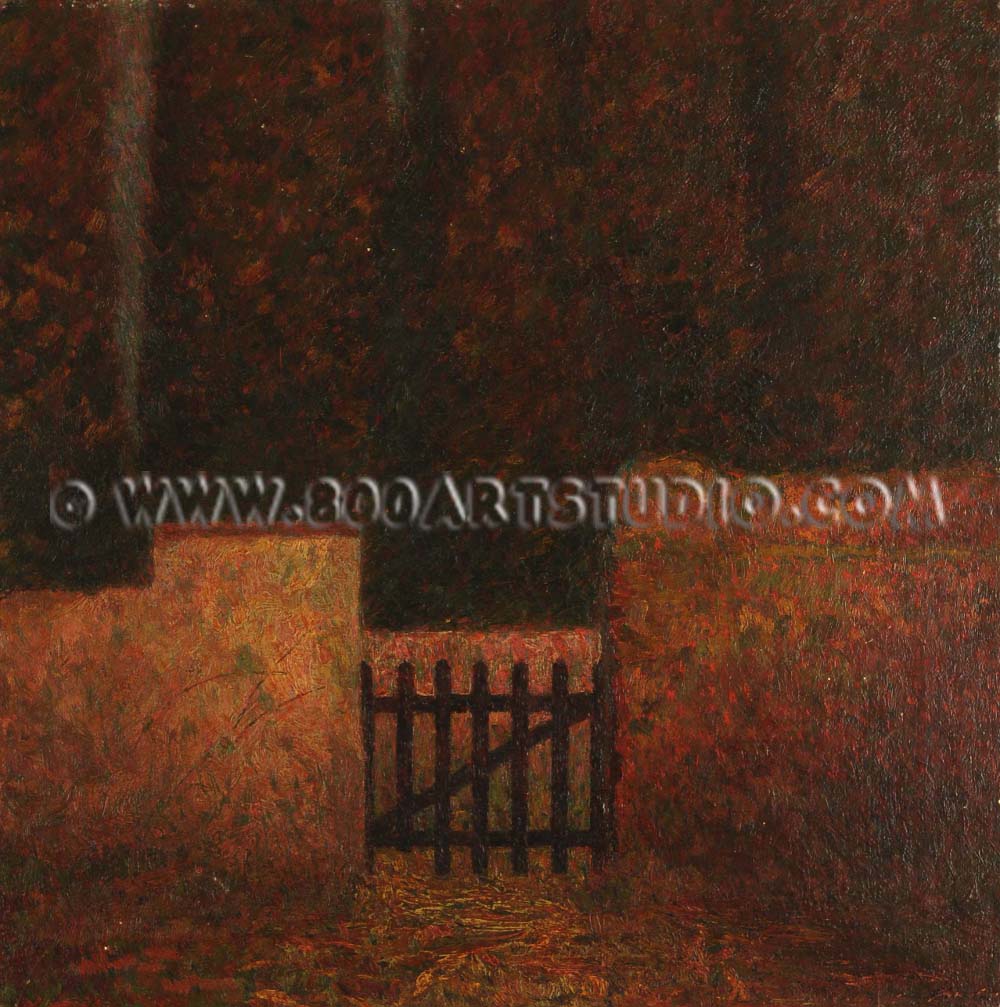Born in Leghorn, after having received the first teachings from Lorenzo Cecchi at the Art and Trade school, around 1897 Benvenuti began to get closer to the Macchiaioli circles, taking an interest above all in the Adolfo Tommasi painting. His interest for the pointillism dates back to 1899 and became more specific in 1903 thanks to the essential meeting with the Milanese painter Vittore Grubicy, the main theoretician and popularizer of the new technique, of whom Benvenuti became the most persevering pupil, going regularly to Milan from 1905 until 1920, year of Grubicy’s death.
The artist’s very personal way of testing the pointillist technique got therefore defined at the beginning of the century, nourished by Grubicy’s suggestions, but marked by a stylistic key feature and by a thematic repertoire that are his own, as shown in the triptych “Sensazioni luminose” (Luminous sensations), which was exhibited in 1906 at the National Fine Arts Show of Milan. The exhibition of Milan marked the beginning of an intensive showing activity: in 1907 he took part with seven Leghorn views to the famous Salon des Peintres Divisionistes Italiens organized by the Grubicy Gallery in Paris, two years later he was again in Paris with Llewelyn Lloyd and Plinio Nomellini at the Salon d’Automne.
In 1911 he participated in the Free Art Exhibition of Milan and in 1914 he gave his preference to the LXXXIII Exhibition of the Fine Arts Lovers Society, instead of the second Roman Secessione. During his frequent stays in Milan, besides his painting activity, he developped an interest for the design, cooperating with the cabinet-making House of Eugenio Quarti, protagonist of the Italian Liberty season. In 1920 Grubicy, short before his death, appointed Benvenuti as executor and heir of a considerable number of works, confirming the strong relationship between the two artist, which is also shown in their correspondence, now part of the Grubicy Archive.
After the First World War, Benvenuti settled again in Leghorn, beginning in 1922 to take part to the exhibitions of the Labronico Group and of the Bottega d’arte Gallery, where in 1923 he organized his first personal exhibition, apex of his artistic itinerary. This exhibition showed the mature stage of his painting, characterised by his renewed interest for the pointillist technique. During the Twenties his graphics production became more intense and the result were two exhibitions: in 1933 at the Esame Gallery and in 1935 at the Scopinich Gallery. After the end of the Second World War he took part to some exhibitions (like the one of 1948, From the XIX to the XX Century, at Dante’s Home in Florence) until in the Fifties he had to abandon the painting due to his progressive blindess.
Written by: Gioela Massagli – Translated by: Cristina Panigada
© Studio d’Arte dell’800













